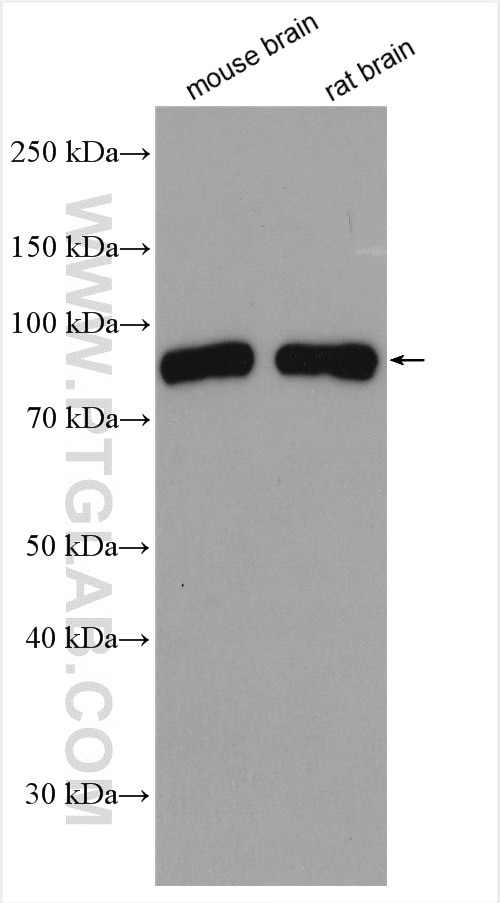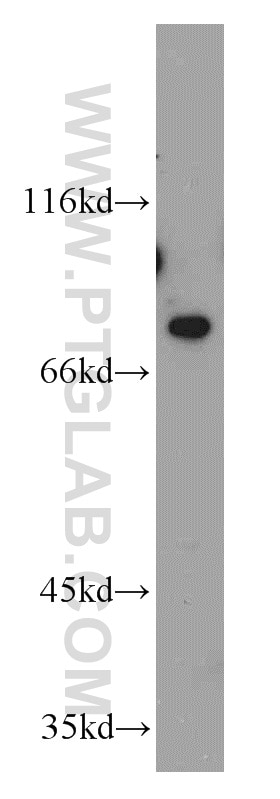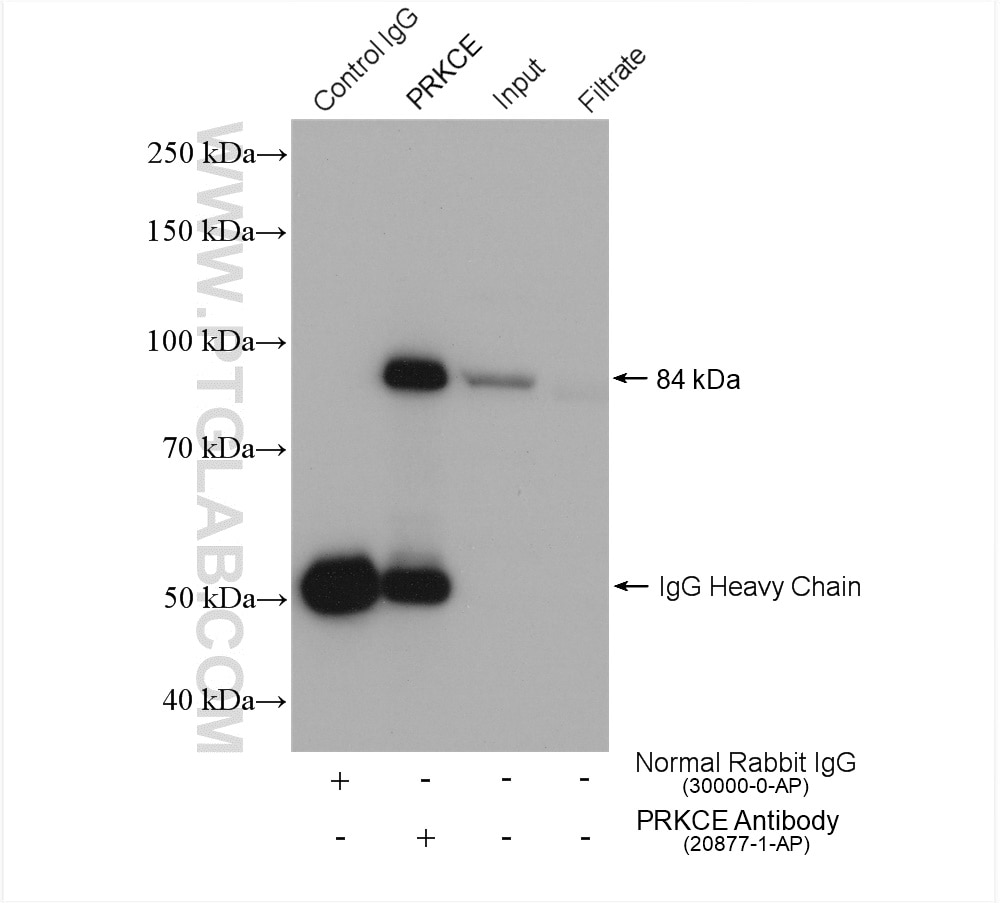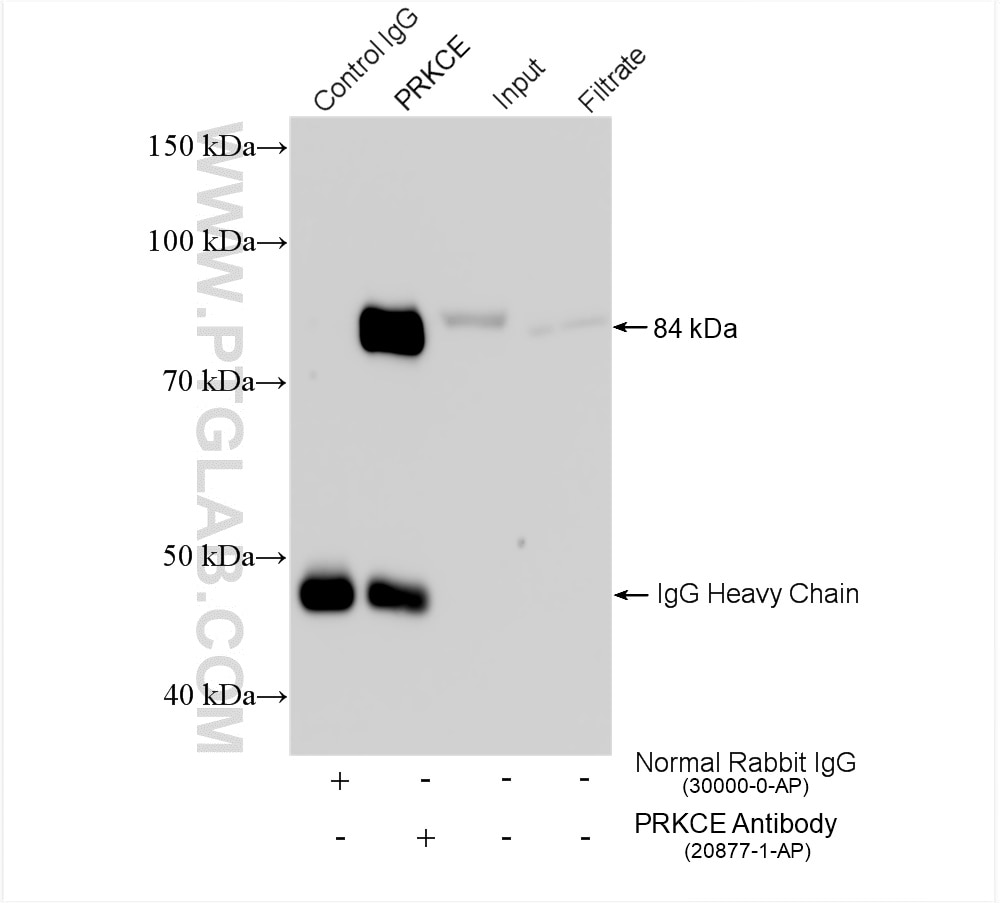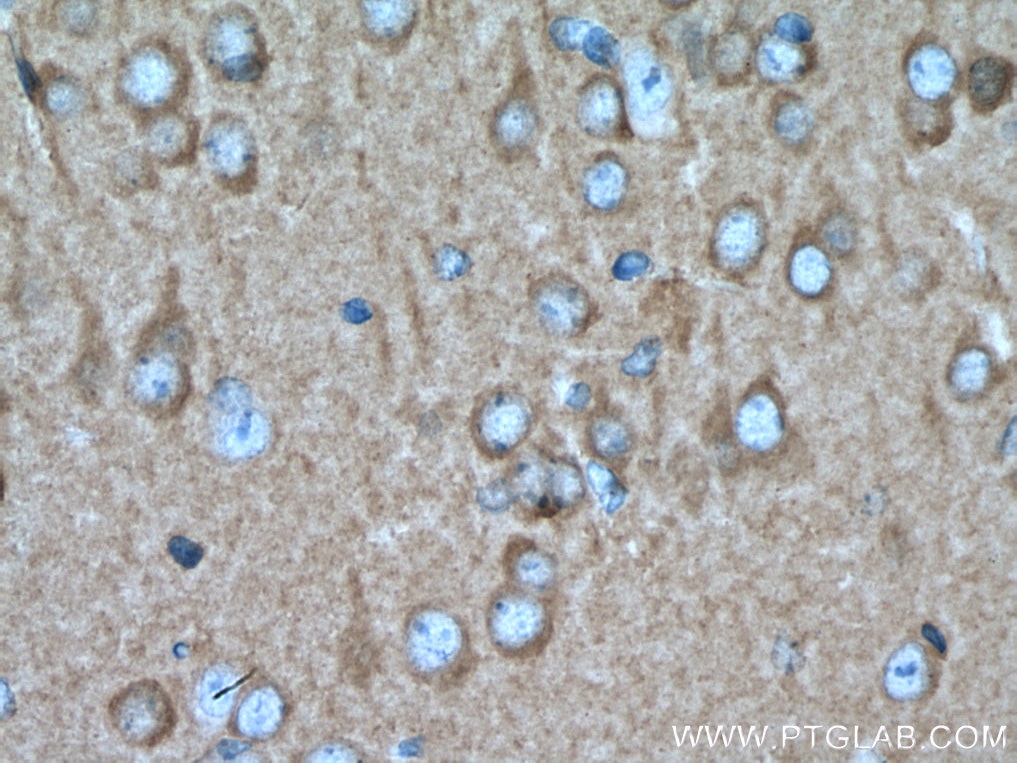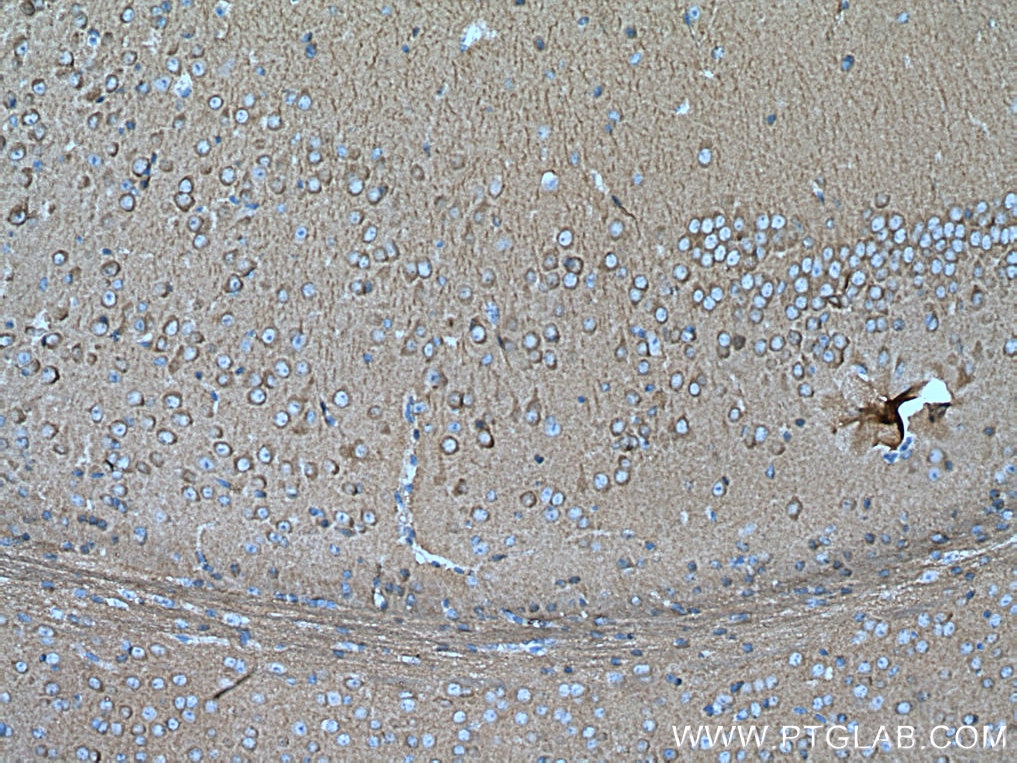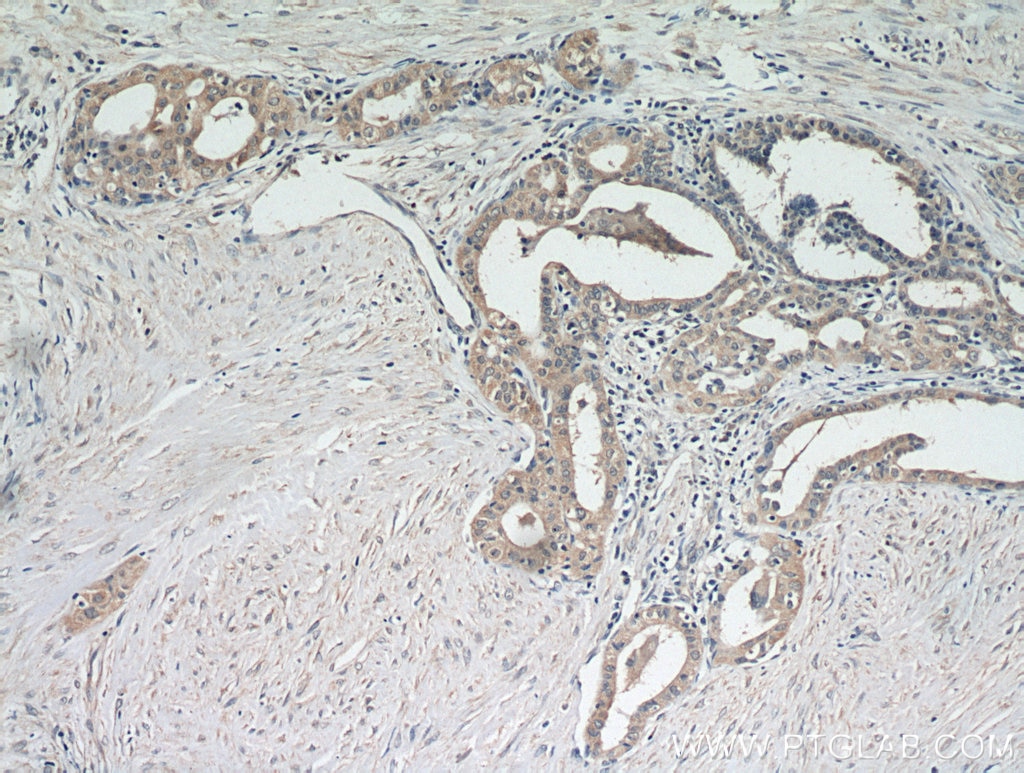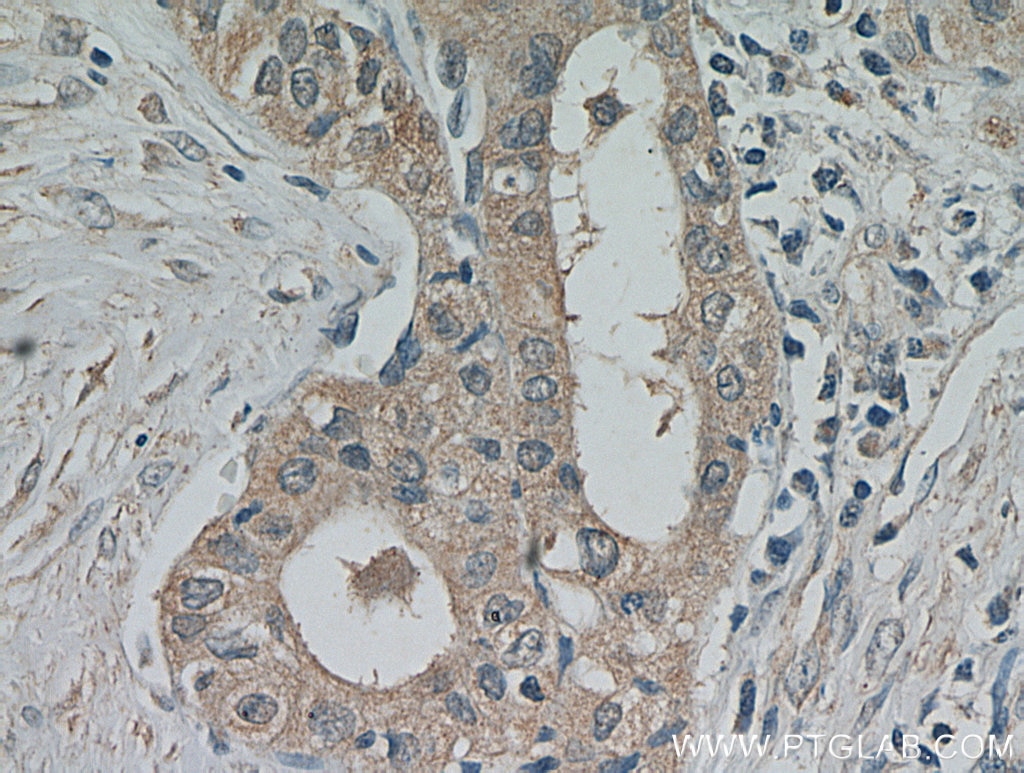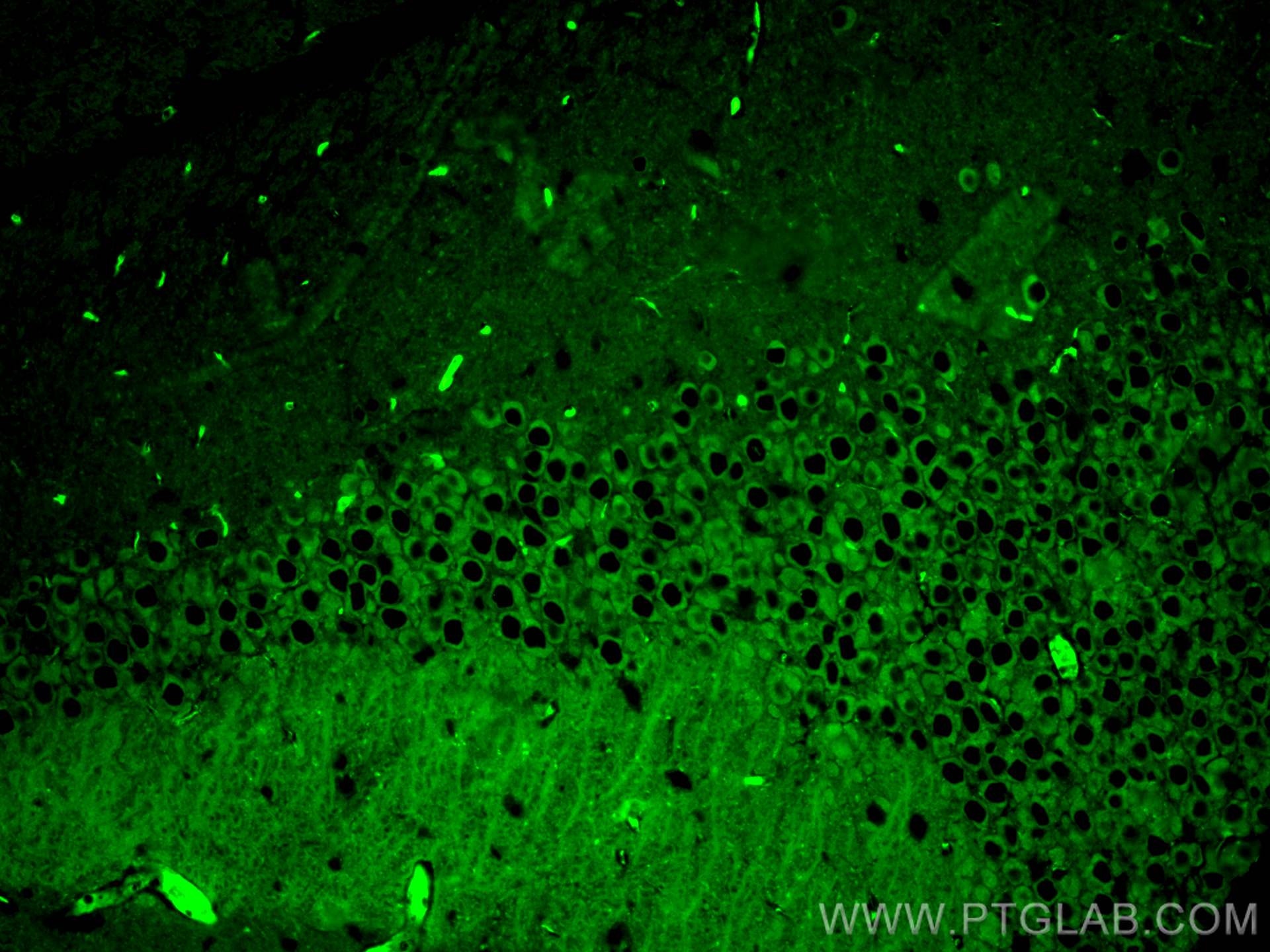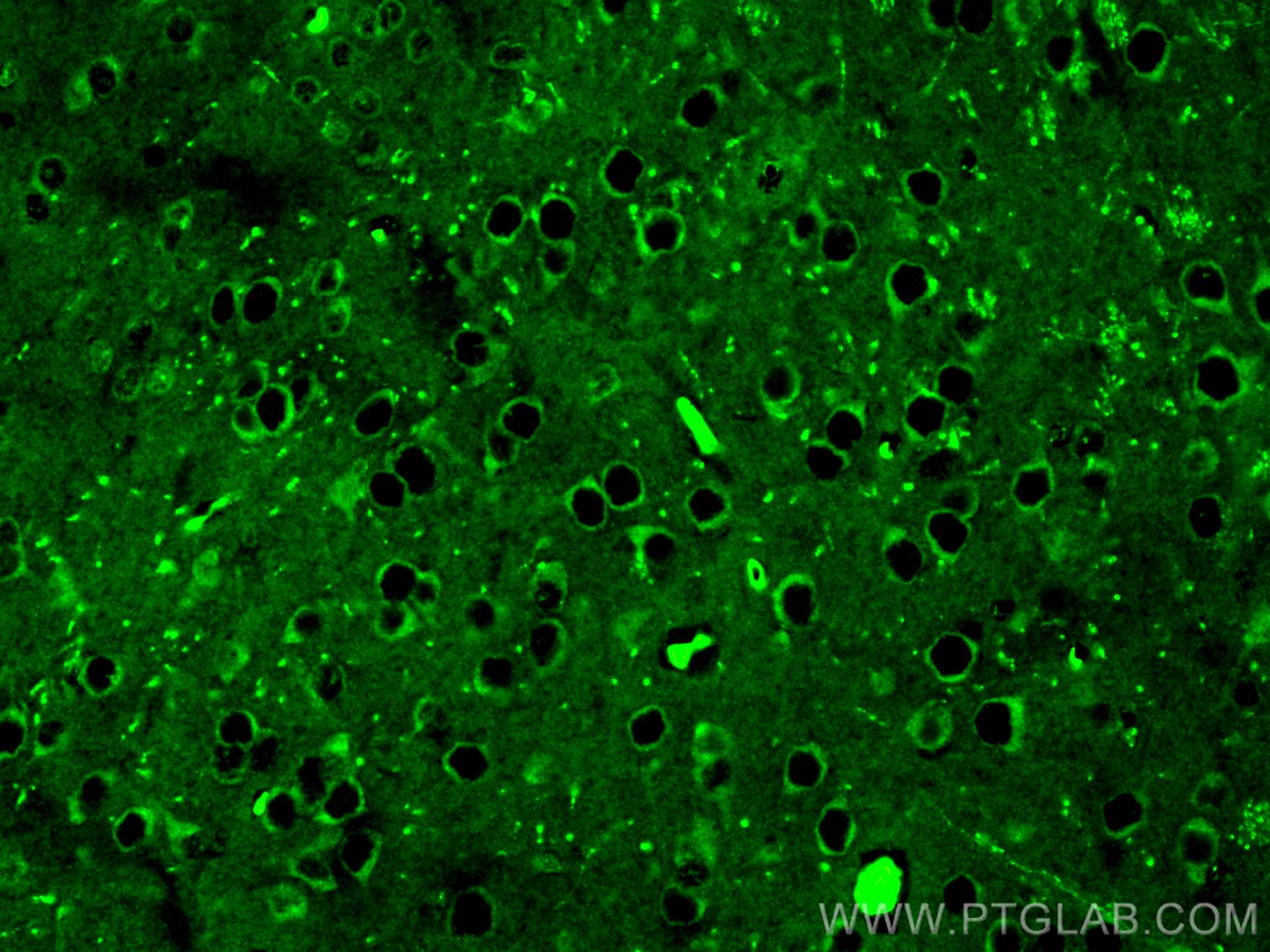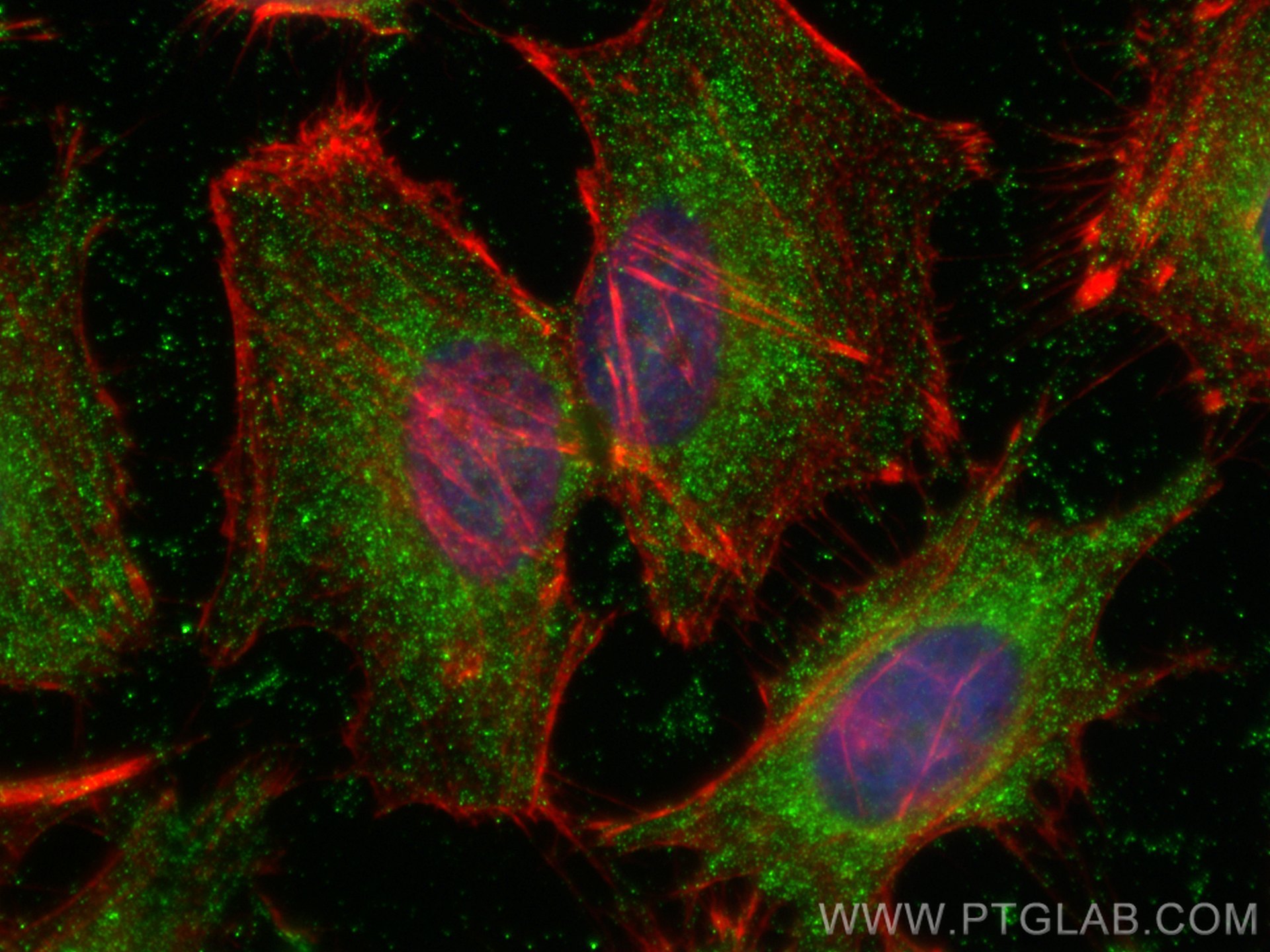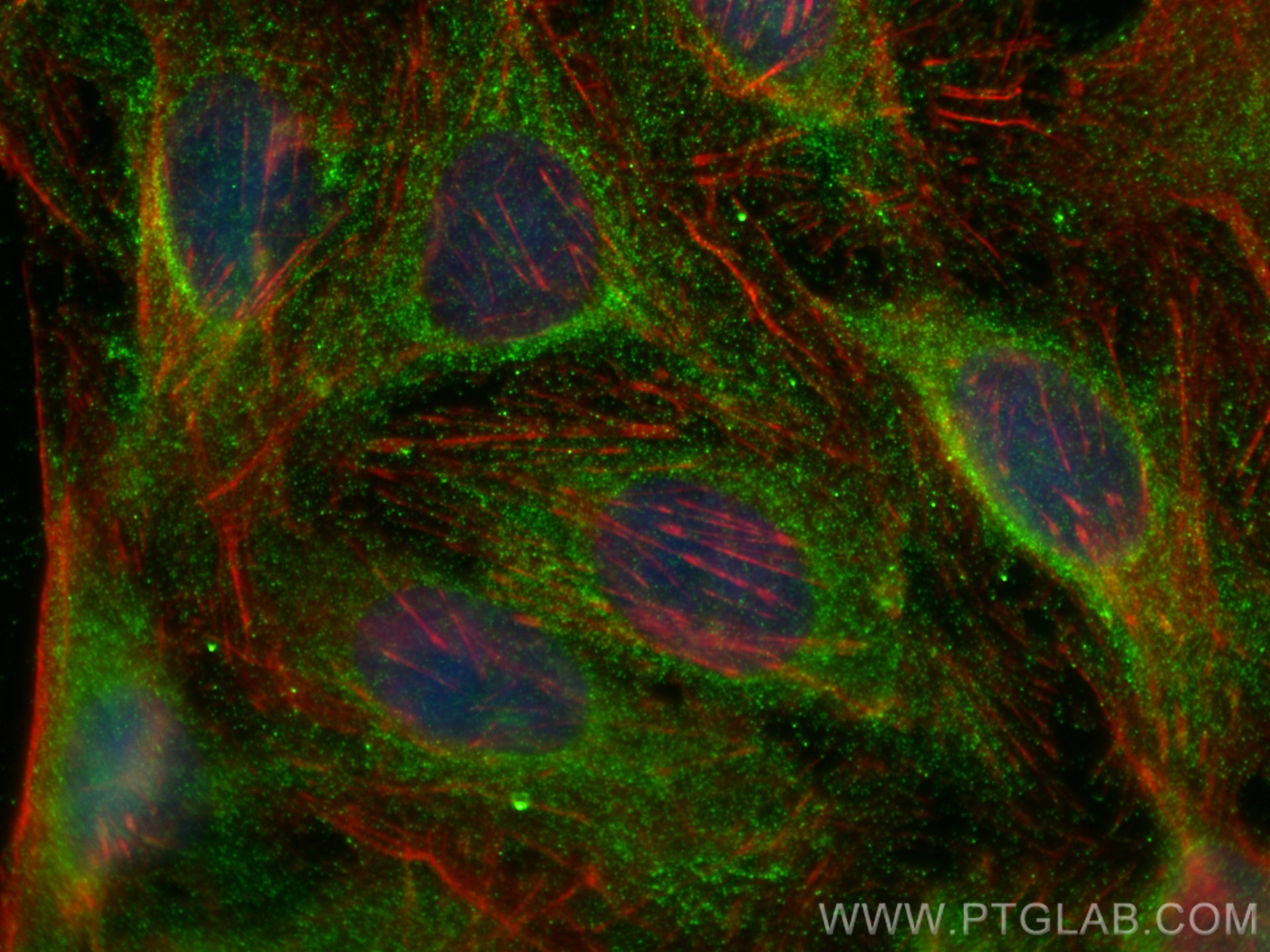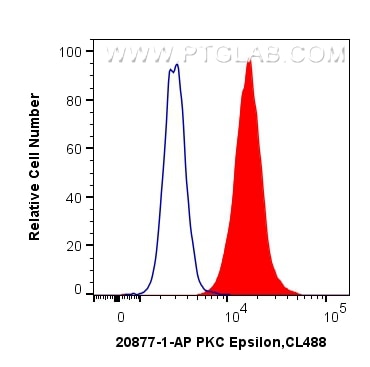- Phare
- Validé par KD/KO
Anticorps Polyclonal de lapin anti-PKC Epsilon
PKC Epsilon Polyclonal Antibody for WB, IHC, IF/ICC, IF-P, FC (Intra), IP, ELISA
Hôte / Isotype
Lapin / IgG
Réactivité testée
Humain, rat, souris et plus (1)
Applications
WB, IHC, IF/ICC, IF-P, FC (Intra), IP, ELISA
Conjugaison
Non conjugué
N° de cat : 20877-1-AP
Synonymes
Galerie de données de validation
Applications testées
| Résultats positifs en WB | tissu cérébral de souris, cellules SH-SY5Y, tissu cérébral de rat |
| Résultats positifs en IP | cellules SH-SY5Y, |
| Résultats positifs en IHC | tissu cérébral de souris, tissu de cancer de la thyroïde humain il est suggéré de démasquer l'antigène avec un tampon de TE buffer pH 9.0; (*) À défaut, 'le démasquage de l'antigène peut être 'effectué avec un tampon citrate pH 6,0. |
| Résultats positifs en IF-P | tissu cérébral de souris, |
| Résultats positifs en IF/ICC | cellules HeLa, cellules U2OS |
| Résultats positifs en FC (Intra) | cellules Jurkat, |
Dilution recommandée
| Application | Dilution |
|---|---|
| Western Blot (WB) | WB : 1:5000-1:50000 |
| Immunoprécipitation (IP) | IP : 0.5-4.0 ug for 1.0-3.0 mg of total protein lysate |
| Immunohistochimie (IHC) | IHC : 1:50-1:500 |
| Immunofluorescence (IF)-P | IF-P : 1:50-1:500 |
| Immunofluorescence (IF)/ICC | IF/ICC : 1:50-1:500 |
| Flow Cytometry (FC) (INTRA) | FC (INTRA) : 0.40 ug per 10^6 cells in a 100 µl suspension |
| It is recommended that this reagent should be titrated in each testing system to obtain optimal results. | |
| Sample-dependent, check data in validation data gallery | |
Applications publiées
| KD/KO | See 2 publications below |
| WB | See 17 publications below |
| IHC | See 1 publications below |
| IF | See 2 publications below |
| IP | See 1 publications below |
Informations sur le produit
20877-1-AP cible PKC Epsilon dans les applications de WB, IHC, IF/ICC, IF-P, FC (Intra), IP, ELISA et montre une réactivité avec des échantillons Humain, rat, souris
| Réactivité | Humain, rat, souris |
| Réactivité citée | rat, Humain, souris, Hamster |
| Hôte / Isotype | Lapin / IgG |
| Clonalité | Polyclonal |
| Type | Anticorps |
| Immunogène | PKC Epsilon Protéine recombinante Ag14976 |
| Nom complet | protein kinase C, epsilon |
| Masse moléculaire calculée | 737 aa, 84 kDa |
| Poids moléculaire observé | 84 kDa |
| Numéro d’acquisition GenBank | BC109033 |
| Symbole du gène | PKC Epsilon |
| Identification du gène (NCBI) | 5581 |
| Conjugaison | Non conjugué |
| Forme | Liquide |
| Méthode de purification | Purification par affinité contre l'antigène |
| Tampon de stockage | PBS avec azoture de sodium à 0,02 % et glycérol à 50 % pH 7,3 |
| Conditions de stockage | Stocker à -20°C. Stable pendant un an après l'expédition. L'aliquotage n'est pas nécessaire pour le stockage à -20oC Les 20ul contiennent 0,1% de BSA. |
Informations générales
PKC Epsilon (Protein kinase C epsilon type) is also named as PKC-ε, PRKCE and PKCE. It belongs to the protein kinase superfamily, AGC Ser/Thr protein kinase family and PKC subfamily. PKC-ε, one of the novel isoforms, as a critical player in membrane mobilization during phagocytosis (PMID: 9069266). KC-ε is tethered to the Golgi through binding of its pseudosubstrate domain to phosphatidylinositol-4-phosphate (PI4P) (PMID: 28539432). PKC-ε traffics on microtubule-associated vesicles from the Golgi to the forming phagosome. As the majority of macrophage PKC-ε is cytosolic, and PKCs translocate from the cytosol to their sites of activity, it predicted that cytosolic PKC-ε concentrated at phagosomes to facilitate membrane addition (PMID: 34622926). Two PKC isozymes of the novel group, PKCε and PKCδ, have different and sometimes opposite effects. PKCε stimulates cell growth and differentiation while PKCδ is apoptotic (PMID: 21810427).
Protocole
| Product Specific Protocols | |
|---|---|
| WB protocol for PKC Epsilon antibody 20877-1-AP | Download protocol |
| IHC protocol for PKC Epsilon antibody 20877-1-AP | Download protocol |
| IF protocol for PKC Epsilon antibody 20877-1-AP | Download protocol |
| IP protocol for PKC Epsilon antibody 20877-1-AP | Download protocol |
| Standard Protocols | |
|---|---|
| Click here to view our Standard Protocols |
Publications
| Species | Application | Title |
|---|---|---|
Elife cAMP-EPAC-PKCε-RIM1α signaling regulates presynaptic long-term potentiation and motor learning | ||
Biochem Pharmacol Thromboxane A2-TP axis promotes adipose tissue macrophages M1 polarization leading to insulin resistance in obesity | ||
J Cell Mol Med Protein kinase C is involved in the neuroprotective effect of berberine against intrastriatal injection of quinolinic acid-induced biochemical alteration in mice. | ||
Fish Shellfish Immunol In vivo study of a novel protein kinase C that mediates immunocompetence and catecholamine biosynthesis in hemocytes of Litopenaeus vannamei by using its potential competitive inhibitor, bisindolylmaleimide I. | ||
Mol Biol Cell MiR-34a regulates blood-tumor barrier function by targeting protein kinase Cɛ. | ||
Oxid Med Cell Longev p66Shc Mediates Mitochondrial Dysfunction Dependent on PKC Activation in Airway Epithelial Cells Induced by Cigarette Smoke. |
